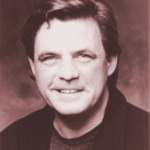“There are two versions of my life,” says Peter Sís. He remembers a loving, happy family in Prague, Czechoslovakia that encouraged him to draw. They told stories and he illustrated them. Free time centered around the family because they had no television or computer. As he grew older, he felt the underlying tension of the political pressures and everyday fear of living in Communist-controlled Czechoslovakia. Families stayed close to each other as much for protection as support.
Formally trained at the Academy of Applied Arts in Prague and the Royal College of Art in London, Sís followed in his father’s footsteps and became a filmmaker. Over a ten-year period, Sís visited free-Europe with special permission from his government to work on documentary films. Each time he returned home with increasing reluctance. At the age of 30, Sís arrived in the U.S. as a visitor to produce a documentary on the 1984 Winter Olympics. Instead, the trip turned out to be the turning point of his life; the eastern bloc voted to boycott the Olympics, ending the film project. Ordered to return home, Sís refused.
Sís had no job and no family in the U.S., but he did have connections. An art museum director he’d met on his film project recommended him for a teaching post at the Otis College of Art and Design in Los Angeles. The museum director also set up a meeting with Maurice Sendak, author of Where the Wild Things Are. Sendak assumed Sís wanted to illustrate for children and arranged introductions to New York publishers. “I was penniless,” says Sís, who had never considered writing and illustrating for children. “I didn’t say no. I [went] to New York to see if I could survive.” But secretly he thought, I will do a book that will be very popular and then I will make a film of it.
Initially, Sís struggled financially illustrating book covers. His obvious talent landed him jobs with Newsweek and Time magazines, which paid twice as much as the children’s publishing houses. Like many artists, illustrating other authors’ work gave Sís the confidence to try writing. Early books, like Fire Truck and Madlenka, reflected his fascination with his own children and their stages of development. As his son and daughter grew, Sís looked inward and mined his own life and topics that interested him. “I had to reinvent myself,” he says. “The close stage with my kids was over. I had to find a new path.”
Sís started with Galileo. In the Starry Messenger, he combined Galileo’s writings with his own story and inventive art to produce a multi-layered sensual world for the reader. In 2003, he put Charles Darwin under his artist’s lens in The Tree of Life. These biographies require careful perusal because of the novelty of the format and the intricacy of the art.
Sís then turned to his own family history. Caldecott Honor Book Tibet Through the Red Boxchronicles his father’s trek to Tibet in the mid-1950s. The elder Sís left home for a filmmaking job, expecting to be home for Christmas. Two Christmases came and went, and still Sís’s father did not return. Only decades later when Sís inherited his father’s diary of the trip was he able to bring some closure to his father’s absence and long-delayed return.
Thre Three Golden Keys illuminates the emotional journey Sís himself endured after leaving his home country. According to Sís, “[The government] says we gave you education, we gave you knowledge. You must give back to the country.” Originally, Sís thought he’d never return to Prague, but now that the Berlin Wall is gone he returns with a different feeling. Working through his fear of Communist Prague, his guilt over leaving his country and his family, Sís celebrates the cultural history of his homeland.
In The Wall (to be released in Fall 2007), Sís revisits the Czechoslovakia of his childhood. A two-year ordeal, Sís relived painful memories and actually stopped working on the book twice. One of the most difficult things for Sís to assimilate was that his memory is fallible; even though he “remembers” the Red Phone (the hot line between the Kremlin and the U.S. President), in fact it never existed and his editor could not allow it to appear in the story. “I had to find positives in a negative,” says Sís of trying to write a story for children that dealt with the darkest time of his life.
Usually Sís submits a well-thought out concept of text and illustrations to his editors. But with The Wall, his editor first saw sketches and slowly pulled Sís into the idea. Perhaps this reverse creative process was one of the reasons the book was so difficult to complete. Sís affectionately describes his editor as a musher directing sled dogs. “She lets me go some distances as much as I please, but then she pulls in and cracks the whip at the end.”
On a recent trip to Prague, Sís publicly celebrated the release of his newest book, Play, Mozart, Play! As part of the festivities, his old films from 30 years ago were shown at the local movie house. “They are from another life,” says Sís. Although he’s shifted media, art remains the focus of his life. “My books somehow happened because of me leaving home to live in another country. If I stayed in Prague and did books at all, they would be about usual subjects and usual things.” His contribution to the people of Prague, and people all over the world, is his eclectic body of children’s literature that continues to challenge the genre.


